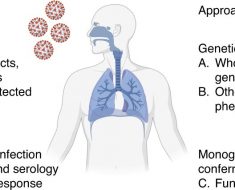DNA methylation is a vital epigenetic mechanism by which gene expression is promoted or inhibited. It occurs at crucial steps in development, as well as in a number of disease states.
DNA methylation patterns can be analyzed in a variety of ways, such as luminometric methylation assays (LUMAs). The method, developed in 2006, provides a novel way to quickly and quantitatively analyze whole genome DNA methylation.
 Image Credit: Science photo / Shutterstock
Image Credit: Science photo / Shutterstock
DNA methylation explained:
LUMA principles
In short, LUMA uses DNA restriction digest reactions followed by pyrosequencing to analyze methylation. Methylation percentage is based on methylation sensitivity to different restriction enzymes.
The two restriction enzymes used are HpaII and MspI, which cleave the sequence 5’-CCGG-3’. The two enzymes differ in sensitivity; MspI is not sensitive to methylation and will cleave at all sites regardless of methylation status. HpaII, however, is methylation sensitive, and will only cleave sites that have not been methylated.
It is the ratio between the activities of these enzymes that indicates the global methylation value. It is measured by pyrosequencing, in which nucleotides are included into the restriction sites.
Pros of LUMA
LUMA has a generally widespread use, and this is not without reason. It has an internal standard which allows it to be used in a widespread distribution, thanks to the DNA digestion enzyme, EcoRI.
Somewhat variable amounts of DNA can be used because the enzyme digests can be equilibrated by calculating them as ratios relative to EcoRI digestion.
EcoRI itself is not sensitive to methylation, which means cleavage should be the sameacross all samples. The normalization of the input of genomic DNA has been a problem for many other DNA methylation assays and EcoRI helps circumvent this problem.
By making use of the Pyrosequencing™ platform, LUMA can analyze several samples simultaneously. The high throughput platform allows for up to 48 samples to be run in less than 20 minutes. The amount of DNA required for LUMA is half of that normally required.
LUMA is not a gene specific assay. While this can limit its usefulness in certain situations, it is of great benefit for uncertain samples. LUMA can be performed on a species without a known reference genome, which limits the previous work required for genetic or epigenetic studies such as those on DNA methylation.
Cons of LUMA
Of course, LUMA also has cons. The assay is only capable of detecting differences in methylation within CCGG sites, which can cause some bias. These CCGG sites are not uniformly distributed in the genome. They also do not exhaust all CpG, or cytosine guanine, sites in the genome. Furthermore, the DNA needs to be high quality for enzymatic digestion.
A pyrosequencing machine is needed for the polymerase extension assay, making LUMA potentially inaccessible option for some. The LUMA assay can also potentially create a lot of hard work.
DNA digestion is usually followed by Southern blotting and PCR to analyze the full suite of fragmented DNA. If researchers have access to the Pyrosequencer™, this process is easier and faster. However, this is not a given.
When compared against other methods, LUMA ranks relatively low. In a study from 2016, researchers compared LUMA with liquid chromatography with tandem mass spectrometry (LC-MS/MS) and long interspersed nuclear elements-1 (LINE-1).
The study considered degree of specificity and sensitivity, the amount of variability between assays, and the amount of starting materials needed by each method. They found that when considering these criteria, they found that LINE-1 was the best method, followed by LC-MS/MS.
LUMA was the least favored. They had lower sensitivity and average specificity, as well as required more starting materials than the other methods (more than 250 ng in comparison to 50 or 100 ng for LINE-1 and LC-MS/MS).
Sources
- LUMA (LUminometric Methylation Assay)–a high throughput method to the analysis of genomic DNA methylation.
- DNA Methylation Analysis: Choosing the Right Method
- DNA Methylation Screening and Analysis
Further Reading
- All DNA Methylation Content
- DNA Methylation – What is DNA Methylation?
- DNA Methylation: Eukaryotes versus Prokaryotes
- DNA Methyltransferase Enzymes
- DNA Methylation Detection
Last Updated: Oct 17, 2018

Written by
Sara Ryding
Sara is a passionate life sciences writer who specializes in zoology and ornithology. She is currently completing a Ph.D. at Deakin University in Australia which focuses on how the beaks of birds change with global warming.
Source: Read Full Article





